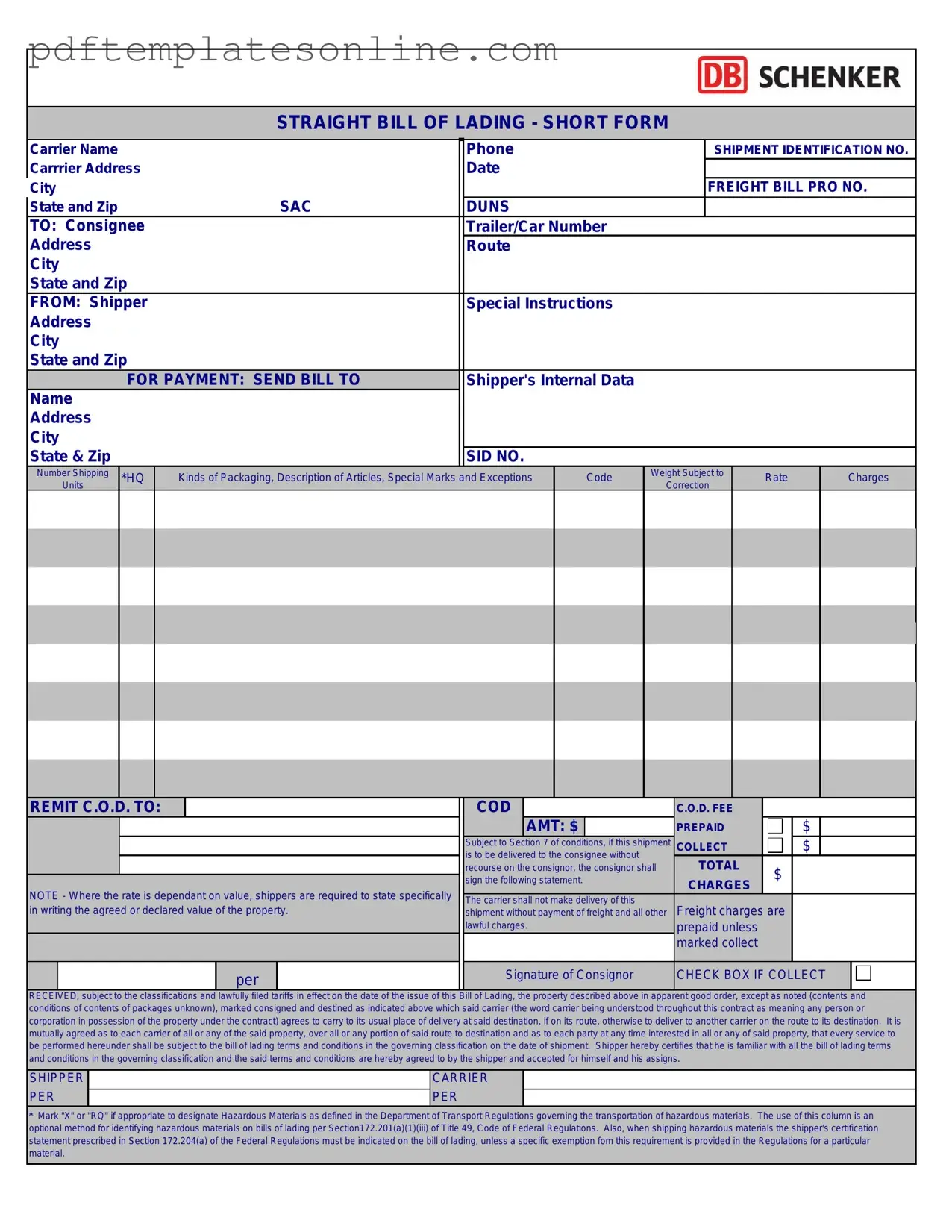Filling out a Straight Bill of Lading can seem straightforward, but many people make common mistakes that can lead to delays and complications. One frequent error is providing incorrect or incomplete addresses. It's essential to double-check the shipping and receiving addresses. Even a small typo can cause significant problems in the delivery process.
Another mistake is failing to accurately describe the goods being shipped. The description should be clear and detailed. If the information is vague, it can lead to misunderstandings about what is being transported. This could result in issues with customs or even lost shipments.
Some individuals forget to include the weight and dimensions of the cargo. This information is crucial for the carrier to determine how to handle and transport the items safely. Without this data, the carrier may not have the necessary equipment or space to accommodate the shipment.
Omitting the terms and conditions can also be a significant oversight. It's important to specify the agreed-upon terms for shipping, including payment responsibilities and liability. Leaving this section blank can lead to disputes later on.
Additionally, people often neglect to sign the Bill of Lading. A signature is a confirmation of the agreement between the shipper and the carrier. Without it, the document may not be legally binding, which can cause issues if something goes wrong during transportation.
Another common error is not keeping copies of the completed form. It's wise to have a record for your files. This can be helpful if there are any questions or disputes about the shipment in the future.
Some shippers also fail to check for any special handling requirements. If the goods need specific care or handling, it’s crucial to note this on the Bill of Lading. Ignoring these needs can lead to damaged goods or accidents during transit.
People sometimes overlook the importance of providing the right contact information. Including a phone number or email address ensures that the carrier can reach you if there are any issues. This simple step can save a lot of time and hassle.
Finally, not updating the Bill of Lading if changes occur can create confusion. If there are any modifications to the shipment, such as a change in delivery date or destination, it’s vital to update the form accordingly. Keeping everything accurate helps prevent misunderstandings and ensures a smoother shipping process.
